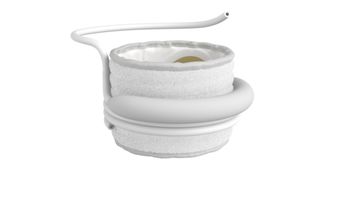
Jobs report shows little change in unemployment, but job growth slows
Key Takeaways
- Healthcare added 55,400 jobs in July, exceeding the average monthly gain, with ambulatory services and hospitals leading the growth.
- Significant downward revisions for May and June job gains revealed a weaker job market, causing market concerns.
Health care is propping up the U.S. employment market, one analyst says.
Health care added enough jobs in July to beat the sector’s recent monthly average.
However,
Health care
Health care added 55,400 jobs in July, topping the average monthly gain of 42,000 new positions per month for the last 12 months. Ambulatory health care services added 33,600 jobs, led by 14,400 in home health care services. Dental offices added 7,100 employees, while physicians’ offices added 6,700 new workers. Outpatient care centers hired 1,300 people, other ambulatory health care services added 1,100 staff, and medical and diagnostic laboratories gained 1,000 new workers.
Hospitals hired 16,000 new workers, with that category including 5,800 staff for nursing and residential care facilities, 2,900 in skilled nursing care facilities, and 2,000 workers in residential facilities for those with intellectual and developmental disabilities and mental health and substance use issues.
Other sectors
Social assistance employment rose by 17,900 new posts, buoyed by 20,600 new jobs in individual and family services. The federal government continued shedding positions, with employment down 12,000 in July and down by 84,000 overall since peaking in January this year.
BLS reported little change for other major industries: mining, quarrying, and oil and gas extraction; construction; manufacturing; wholesale trade; retail trade; transportation and warehousing; information; financial activities; professional and business services; leisure and hospitality; and other services.
Overcounting gains?
BLS also clarified the nation’s unemployment situation this spring and summer.
“Revisions for May and June were larger than normal,” the report said. The change in total nonfarm payroll employment for May was revised down by 125,000, from 144,000 jobs gained to 19,000. The change for June was revised down by 133,000, from 147,000 new posts to 14,000.
“With these revisions, employment in May and June combined is 258,000 lower than previously reported,” the report said. BLS added: “Monthly revisions result from additional reports received from businesses and government agencies since the last published estimates and from the recalculation of seasonal factors.”
‘Not what we want to see’
With the revisions for May and June and relatively little change in July, news outlets noted some strong market reactions to the report.
“Obviously, they're not what we want to see," Stephen Miran, chair of the White House Council of Economic Advisors, told
“Stocks plummet on Wall Street as jobs report, revisions set off economic alarm bells,” said a report by
The BLS numbers “officially ripped the mask off the market,” said a
“The underlying weakness that had been apparent
It appeared tariffs and the threat of more and greater taxes on imports have created uncertainty in the market. On July 31, President Donald J. Trump issued an executive order “Further Modifying the Reciprocal Tariff Rates,” which will go into effect later this month.
By mid-day Aug. 1, the White House’s
The news reports noted Democrats have been critical of the president's economic policies, and Senate Finance Committee Ranking Member Ron Wyden, (D-Oregon) issued a statement.
“Trump was handed the keys to the strongest major economy in the world, and he’s driving it into a wall," he said in the statment. "It looks like health care is one of the last areas of our economy still churning out lots of new jobs, but Trump and Republicans just passed enormous cuts to Medicaid and rural health that will devastate that sector too. Trump and Republicans need to change course dramatically before they plunge us into a recession, because we certainly can’t sustain this chaos and uncertainty for another three and a half years.”
Newsletter
Stay informed and empowered with Medical Economics enewsletter, delivering expert insights, financial strategies, practice management tips and technology trends — tailored for today’s physicians.








